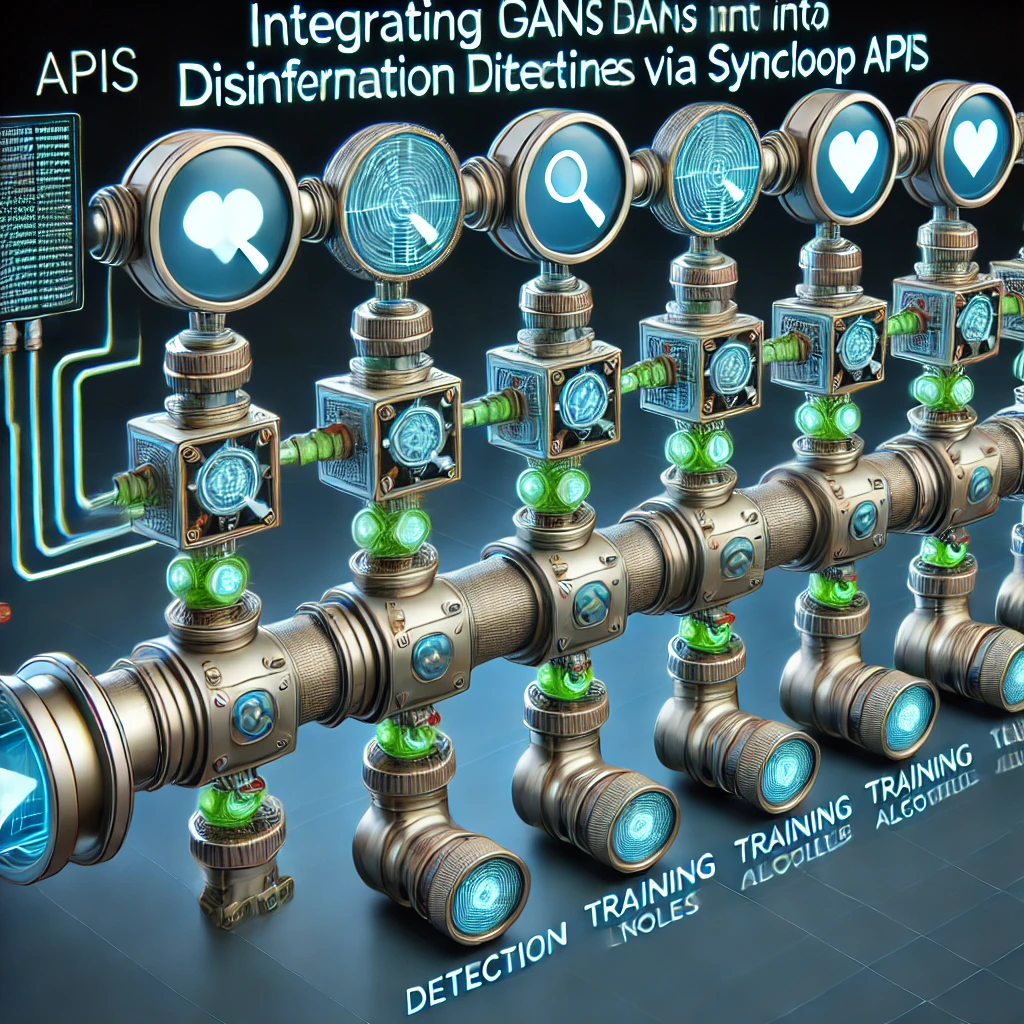Optimizing GAN Training and Evaluation for Disinformation Detection Using Syncloop’s Analytics Tools

Optimizing GAN Training and Evaluation for Disinformation Detection Using Syncloop’s Analytics Tools
Why Optimization Matters in GAN Training and Evaluation
GANs involve complex interactions between two networks (generator and discriminator) that require fine-tuning for optimal performance. Common challenges include:
- Mode Collapse: Generator produces limited variations of outputs.
- Overfitting: Model learns to mimic training data without generalizing.
- Unstable Training: Balancing generator and discriminator training is difficult.
Optimization ensures that these challenges are addressed, resulting in a robust GAN capable of detecting diverse disinformation patterns.
Syncloop’s Analytics Tools for GAN Optimization
- Real-Time Monitoring Track GAN training metrics such as loss functions, accuracy, and iteration times to identify and address issues early.
- Performance Dashboards Visualize trends in GAN performance across training epochs using Syncloop’s interactive dashboards.
- Error Tracking Identify errors in data handling or model workflows through detailed logs and analytics.
- Model Comparison Compare the performance of different GAN versions to choose the most effective model for disinformation detection.
- Custom Alerts Set up alerts for anomalies in training metrics, such as sudden spikes in loss values or prolonged training times.
Steps to Optimize GAN Training and Evaluation with Syncloop
1. Prepare and Preprocess Data
- Use Syncloop’s Transformers to clean and format datasets for GAN training.
- Validate data quality using analytics tools to ensure consistency.
2. Automate Training Workflows
- Automate iterative training cycles with Syncloop’s workflow tools.
- Use IfElse to handle branching logic based on training outcomes.
3. Monitor Key Metrics
- Track generator and discriminator loss values to ensure balanced training.
- Use Syncloop’s dashboards to analyze metrics such as epoch duration and model accuracy.
4. Evaluate Model Outputs
- Deploy APIs to test GAN outputs against validation datasets.
- Use analytics to assess metrics like precision, recall, and F1-score.
5. Optimize Hyperparameters
- Experiment with different learning rates, batch sizes, and activation functions.
- Monitor the impact of these changes on model performance using Syncloop’s tools.
6. Deploy and Monitor in Production
- Use Syncloop to deploy the optimized GAN model in disinformation detection pipelines.
- Continuously monitor performance metrics to maintain effectiveness.
Use Case: Optimizing GANs for Fake News Detection
- Data Preprocessing
- Use Syncloop to preprocess a dataset of real and fake news articles.
- Validate data consistency and diversity using analytics tools.
- Training and Monitoring
- Automate GAN training with workflows that adjust parameters based on performance metrics.
- Monitor generator and discriminator loss values in real-time.
- Evaluation
- Test the GAN model’s ability to classify news articles as real or fake.
- Use Syncloop’s dashboards to assess precision and recall scores.
- Deployment and Optimization
- Deploy the GAN-based detection model via Syncloop APIs.
- Continuously refine the model using feedback from analytics tools.
Best Practices for GAN Optimization with Syncloop
- Start with High-Quality Data Use Syncloop’s preprocessing tools to ensure datasets are clean, diverse, and representative.
- Monitor Continuously Leverage real-time analytics to track training progress and identify bottlenecks.
- Experiment Strategically Test different configurations systematically and compare results using performance dashboards.
- Automate Where Possible Streamline repetitive tasks like hyperparameter tuning and data validation with Syncloop workflows.
- Secure Data and Workflows Use Syncloop’s security features to protect sensitive data and prevent unauthorized access.
Future Trends in GAN Optimization with Syncloop
- AI-Powered Analytics Incorporate AI to predict and resolve training issues based on historical data.
- Enhanced Collaboration Enable team-based GAN optimization with shared analytics and workflow management tools.
- Scalability Improvements Support large-scale GAN training with distributed workflows and optimized resource allocation.
- Integration with Emerging Technologies Combine GANs with IoT and blockchain solutions for more comprehensive disinformation detection systems.
Conclusion
Optimizing GAN training and evaluation for disinformation detection requires robust tools and workflows. Syncloop’s analytics tools provide the insights needed to refine models and enhance their performance. By leveraging these capabilities, developers can build GANs that effectively combat the spread of disinformation.
An illustration of a GAN training process integrated with Syncloop analytics, showcasing performance metrics, dashboards, and workflow automation.
Back to Blogs